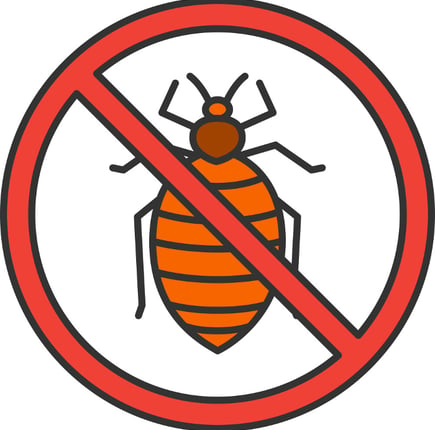Will Permethrin Kill Bed Bugs?
Will permethrin kill bed bugs? Learn how permethrin works and its effectiveness, limitations, and how to use it safely to tackle bed bug infestations.
DRZ
12/11/20243 min read


Waking up to itchy red bites and discovering a bed bug infestation in your home can be a nightmare. These pests are notoriously difficult to eliminate, and people often look for reliable solutions to get rid of them. One such solution is permethrin, a powerful insecticide that has been used for decades to combat a wide range of pests. But the big question remains: can permethrin kill bed bugs, and is it the right choice for tackling an infestation?
In this article, we’ll explore the effectiveness of permethrin as a bed bug treatment, how it works, its limitations, and safer alternatives to consider.
What Is Permethrin, and How Does It Work?
Permethrin is a broad-spectrum synthetic insecticide derived from a natural compound found in chrysanthemum flowers. It belongs to the pyrethroid family, a group of chemicals known for their potent insect-killing properties. Permethrin works by attacking the nervous system of pests, paralyzing them and ultimately leading to their death.
Permethrin is available in various forms, including sprays, creams, and powders, and is widely used in agriculture, textiles, aviation, and personal pest control products.
For bed bugs, permethrin works in two primary ways:
Contact Killing: Bed bugs that come into direct contact with permethrin are immobilized and killed within minutes.
Residual Effect: Permethrin leaves behind a toxic residue on treated surfaces, which can kill bed bugs that come into contact with it days or weeks after application.
Is Permethrin Effective Against Bed Bugs?
Permethrin is effective in killing bed bugs, but its success depends on how it is applied and the infestation’s severity. Here’s what you need to know:
1. Direct Contact
When permethrin spray is applied directly to bed bugs, it works quickly to paralyze and kill them. However, bed bugs are experts at hiding in hard-to-reach places like cracks, crevices, and mattress seams. If the pesticide doesn’t reach these hidden areas, many bed bugs may survive.
2. Residual Killing
Permethrin’s residual effect can help kill bed bugs that come into contact with treated surfaces, even if they are not sprayed directly. However, this effect diminishes over time, and reapplication may be necessary to maintain effectiveness.
3. Egg Elimination
Permethrin can also kill bed bug eggs by disrupting their development. However, eggs hidden deep within furniture or walls may escape treatment, allowing the infestation to persist.
Limitations of Using Permethrin
While permethrin is a useful tool in bed bug control, it is not without its limitations:
1. Pesticide Resistance
Over time, bed bugs in some areas have developed resistance to permethrin and other pyrethroids. These resistant bugs may have thicker shells or biological mechanisms that reduce the pesticide’s effectiveness.
2. Hiding Spots
Bed bugs are notorious for finding refuge in tiny, inaccessible areas, making it difficult to treat them all with permethrin.
3. Reapplication Needed
The residual effect of permethrin fades over time, requiring multiple applications to control an infestation fully.
4. Toxicity Concerns
While permethrin is safe for humans when used as directed, it is highly toxic to cats and can be harmful to aquatic life. Care must be taken to use it responsibly.
How to Use Permethrin for Bed Bug Control
If you choose to use permethrin, follow these steps to maximize its effectiveness:
Prepare the Area
Remove clutter and wash all bedding, curtains, and clothing in hot water.
Vacuum mattresses, furniture, and floors to remove debris and visible bed bugs.
Apply Permethrin
Mix permethrin concentrate (like Flex 10-10) with water according to the manufacturer’s instructions.
Use a pump sprayer to apply the solution to infested areas, focusing on mattress seams, furniture edges, and baseboards.
Repeat as Needed
Reapply every few weeks to maintain the residual effect and target newly hatched bed bugs.
Safety Precautions
Keep permethrin away from pets, especially cats.
Ventilate treated areas and avoid direct skin contact with the spray.
Alternatives to Permethrin
If permethrin doesn’t seem like the best option for your situation, consider these alternatives:
1. Heat Treatment
Bed bugs cannot survive at temperatures above 120°F (49°C). Professional heat treatments or high-temperature dryers can effectively kill bed bugs and their eggs.
2. Diatomaceous Earth
This natural, non-toxic powder dehydrates and kills bed bugs when they crawl through it.
3. Professional Pest Control
Exterminators use a combination of chemical and non-chemical methods to eliminate bed bugs effectively.
Are Bed Bugs Fully Resistant to Permethrin?
While some bed bugs have developed resistance to permethrin, it remains effective against most infestations. However, resistance is an ongoing challenge, and scientists are constantly searching for new and improved pesticides to combat this problem.
Final Thoughts:
Will permethrin kill bed bugs? Yes, permethrin is a powerful tool in the fight against bed bugs, capable of killing them on contact and leaving a toxic residue that continues to work over time. However, it is not a standalone solution. Successful bed bug control often requires a combination of methods, including heat treatments, professional pest control, and ongoing vigilance.
If you decide to use permethrin, follow the instructions carefully, take safety precautions, and consider integrating it into a broader pest management plan for the best results. With persistence and the right approach, you can reclaim your home from these unwelcome intruders.
Call 1-888-394-0227 (Toll Free)
Speak to a Pest Control Professional in Your Area
